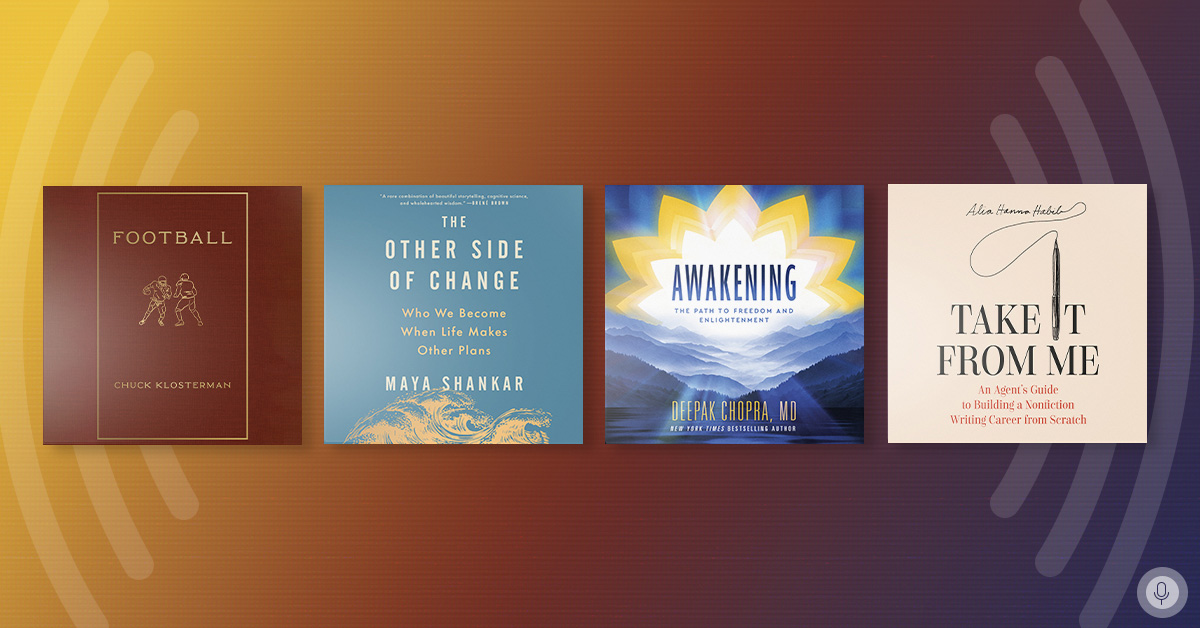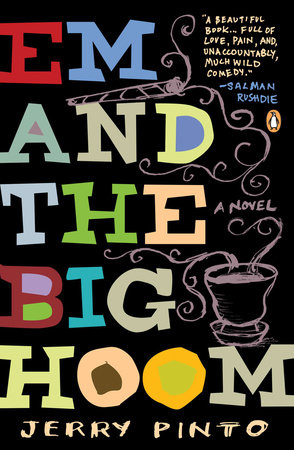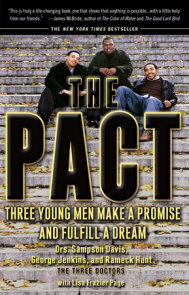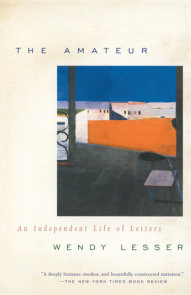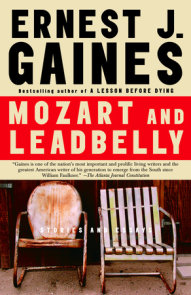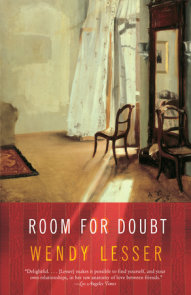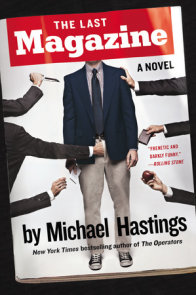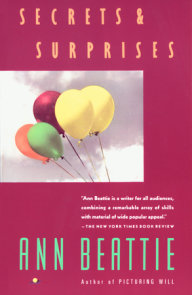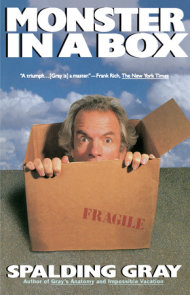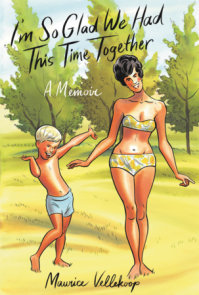READERS GUIDE
Questions and Topics for Discussion
INTRODUCTION
There’s something different about the Mendes family. In a one-bedroom, hall-kitchen apartment in Mahim, Bombay, lives a Roman Catholic family from Goa: Imelda; Augustine; their daughter, Susan; and their son, the unnamed narrator of their story. Em and the Big Hoom, as the parents are affectionately referred to by their children, look after each other in their own ways. Em is an unpredictable fixture in the apartment, spending most of her days at home, brewing tea and smoking beedis while the Big Hoom works reliably at his office job. The house is filled with tangible, unselfish love between the Mendes family, but it is also tested and affirmed by a relentless darkness, threatening to grip Em at any time.
The family works together as they struggle to find peace within Em’s ever-transforming manic depression, from highs that take them from the euphoria of their mother’s brilliance and honesty to sudden lows with paranoia, inaccessibility, and attempts to take her own life. When Em is well, the world of the novel brims with the delight of her charming strangeness; when Em is at the mercy of her disorder, the world seems to warp in the power of her suffering. The Big Hoom is a benevolent mystery to his children, presiding over an at times chaotic household. His affection for Em is apparent even (or especially) in silence.
Their son, driven by his desire to understand the origin of his mother’s bipolar disorder—and perhaps also to determine his own odds for “madness”—chronicles his parents’ early life together. Em’s journal entries and letters to the Big Hoom add another vibrant dimension, her voice at times both heartbreakingly funny and uniquely vicious.
The chemistry and compassion between Em and the Big Hoom is as moving as any love story, and as devastating. Jerry Pinto writes mental illness as a kind of poetry, painful and intimate. The Mendes household is full of hilarious nicknames, peculiar hours, equal parts worry and humor, and an absolute acceptance of one another. Pinto has crafted a wild, distinctly original character in Em, and in the family that is at once held together and torn apart by her unknowable mind.
ABOUT JERRY PINTO
Jerry Pinto is a writer of prose, poetry, and children’s fiction, in addition to being a journalist. Em and the Big Hoom, winner of the 2013 Crossword Book Award and the Hindu Literary Award, is his first novel. He lives in Mumbai, India.
A CONVERSATION WITH JERRY PINTO
1. What was your inspiration for Em and the Big Hoom?
I think Em and the Big Hoom was the novel I always wanted to write. It was the first thing I ever started to write, when I was around sixteen, in a summer of angst and red mud lifted from Shivaji Park by the pre-monsoon breezes. It was supposed to cure me, this novel. It was supposed to help me deal with what I had just learned was called a “skewed family.” So I began writing with the desire to get it all out. I had also just learned the word catharsis. It was such a beautiful word, so rich with mythic association, so adult in connotation that it had to be true. I wanted a way to scream my rage at the world and its injustices, silly prat that I was.
I wrote this version of it, the one you are reading, nearly twenty-four years later when I had managed to rid myself of many of those notions of art-as-cure and art-as-therapy. Now I just wanted to write a novel.
2. Em and the Big Hoom is categorized as fiction, yet seems so persuasive in its character precision that it is sometimes unimaginable that it could be anything but a true story. On the spectrum between fiction and memoir, where would you say this novel fits?
This book is a novel. It is true that my mother did suffer from bipolar disorder and that my family spent most of its time and energy dealing with that. And so I suppose you could say the book is based on fact. But I could not fit my family into a book. You know yourself too well; you know your family too well. They spill over the sides. Their real stories implicate too many people. The pages crowd up, the voices multiply. You’re now using too many adjectives and there are too many possibilities.
In one of the many earlier avatars of this novel, it was a memoir. The psychic cost proved too high and the book ground to a halt. And so I backed off and looked again at what I wanted to do. I finally chose fiction because I wanted to be able to say, “Yes, this is my story. But it is a story I tell about what happened to me.” And so I say that my book is 95 percent fact and 95 percent fiction. The small sliver that is left is for the reader to come in and say what she likes about my book. “Jerry wrote a novel,” she might say. “Jerry wrote a memoir,” she might be equally likely to say. I don’t mind. I think each reader makes a book happen and each happening is different. It is what each reader makes of it.
3. You are a journalist, a poet, a researcher, and a nonfiction writer, among many things. How was the experience of writing fiction different from those?
I don’t know that it was any different. In its basic shape, almost all writing is the same: an act of translation from idea to word. It is a murder: you take the amorphous and give it shape. It is a challenge: the blank sheet, the white computer screen, they mock you and beckon you simultaneously. Have you got what it takes, Jerry? Have you still got something to say, Jerry? It is a narrowing: the first word is free and can do what it wants but it already limits the second word and the second word limits the third and suddenly the fourth is beginning to sound almost inevitable and then you must jump in and pound it, ezrapound it, make it new. So there are days when you only want to edit someone else’s writing, or shape someone’s words anew in the act of translation, but you know that those are stopgap arrangements. Eventually, you must go back to doing what you came here to do: you must tell that story that is yawning and stretching and coming awake inside your head.
So each morning I think of myself as going to a huge building which is only a facade. It’s all windows, windows, windows. Then I look at the windows and something seems to be moving behind one and I open that window and it’s a poem, or it’s a short story, or it’s a pretender, a poem that collapses into prose, a short story that expands into a novel. And often, so often, it’s a nothing pretending to be a something; a self-indulgence pretending to be an enigma; a love of language betraying you into simply putting words down because they’re words; an experiment that promises to rewrite literary history but fails even as you’re writing it. You learn to deal with that stuff, too.
4. What was your writing process for Em and the Big Hoom? Do you prefer this method of writing?
I retired from active journalism to write Em and the Big Hoom. I was forty and I thought it was time to give it my best shot. I made a pact with the universe. I would write a thousand words a day, every day, and I would not brush my teeth until I had written those words. But once they were done, the rest of the day would be mine. And so I wrote a thousand words a day for two and a half years, all in longhand because that’s how I write, longhand for the first draft, then read it aloud, then key it in, then read it again . . .
I had 750,000 words at the end of that, give or take 100,000. I then decided that I would stop writing and give myself a few months off and then read again. I did and began to read and found, to my horror, that it was bad stuff. It reeked of all my influences, my predecessors, my gurus, my library, my archive. But just when I was about to give up, I stumbled on a bit of writing that sounded like me, that I thought I could put my name to. I wiped up my tears and blew my nose on my sleeve and folded the page over. Then I read on and found another bit and another bit and when I was done, I had unearthed about 20,000 words from the morass. These I rewrote and found that I could link them up, make sense of them.
And then it was done.
I do not prefer this method of writing. I want to put a fat-nibbed pen to paper with an interesting nap and feel the words come pouring out of me. I want to be able to send this off to my publishers and have them write back to me saying that they are going to offer me millions of dollars for the honor of publishing me. But since this does not happen—at least not yet, no harm hoping—I will make do with the method I use now.
5. This story is told in nonlinear time—was this a craft device of your storytelling? Or did it occur organically as you wrote?
There is nothing organic about writing a novel. There is nothing organic about a cake. You make a cake. You set out to break eggs and sift sugar and flour together and all the rest of that. No cook ever claims that a cake happened organically. We would laugh at them if they did. So, no, very little about Em and the Big Hoom was organic. It was all planned and orchestrated and devised, down to the number of chuckles. . . . I am going to the other extreme, now, no?
I think sometimes you plan some things and some things you’re handed and since most of what authors tell you is post facto, you should be very careful about believing them because they will always tell you that the good stuff was their own nature and the bad stuff was nurture.
6. There are so many wonderful, unexpected nicknames in the novel, yet we never learn our narrator’s name. Why is this?
I know. I kept thinking, name him, name him, come on, Jerry, name him, and he just kept slipping away.
No, that sounds fey.
I didn’t name him. I’m sorry. What can I say?
7. The novel draws from journal entries and letters, it bears such specific knowledge of the Mumbai hospital system and pharmacology. What kind of research did you conduct for this project?
My mother was not well. I was terrified I was going to end up mad. I wanted to know what I was in for so through my life I read almost anything about mental health with a sick fascination. I read the pop psychology and I read Freud—whatever I could lay hands on. I read Mary Barnes and R. D. Laing. I read One Flew Over the Cuckoo’s Nest and I Never Promised You a Rose Garden and Psychopathia Sexualis. The rest I lived.
Not much research, I’m afraid. Just lots of memories to be retrieved and to be reinvented as fiction.
8. You are Goan, not unlike Augustine. Can you speak to your own religious upbringing as it relates to the faith of your characters?
I think we’re all a little binary when we think about God/dess.
Either you’re for or against, and if you’re for, you must tell me your religion, denomination, and degree of belief before I agree that you’re worthy of being called a believer. If you’re not for, then you must be either an atheist or an agnostic and you probably went to a fancy college and watch films with subtitles.
I don’t think it works that way. I think religion is a process, one of the many processes we put ourselves through. God/dess is far too all-pervasive a trope, a leitmotif of culture, to be dismissed easily.
No, I’m saying this all wrong. One day, I listen to a Gregorian chant and something moves and shifts inside me, and I am transported and I believe. Then I pick up the newspaper and I read of some senseless cruelty inflicted in the name of religion and I think, “Include me out.” Then I translate an old Marathi saint-poet and in her anguish and in her ecstasy, I get a whiff of truth. I don’t have any answers, any concrete answers. I can only tell you that religion is a challenge for me and it is not one that I am ever sure I will be able to confront without it changing who I am and I am terrified of change, even if I am deeply tempted by it, and know that it is inevitable anyway.
9. There are several instances in Em and the Big Hoom where a character transcends or works beyond the boundaries of their particular class status. Augustine, for example, being the first in his family to hold an office job. Is that something you’ve witnessed recently in Mumbai? How has the economic reality shifted since the timing of your novel?
Every city is a machine for reinvention of the self. We come to the city not to stay who we are, but to become another person. Sometimes the aim of the émigré is simple: I want to be rich. Sometimes it is tragic: I want not to be poor. Sometimes it is epic: I want to change the way the world is. But no one comes to the city because she is content with who she is. And so my city, Bombay, is filled with people who want something else. Most arrive with just the idea that it can’t get worse. They stay which means it hasn’t. A slum in my city is most people’s idea of hell. So the city’s slums produce an even more terrifying question: what was the countryside like that this is better?
The cities of India are all about firsts. Everyone is pushing themselves to be something else, someone else. And the intensity may be different, the means may be different, the ambitions may be different, but the impetus is the same.
10. Of all of the character’s voices, which was the easiest to write? The most difficult? Which is your favorite?
I honestly cannot remember. I find it difficult to say. I love writing. I really do. But it is tough work and everything about it is tough. But what is the most terrible thing is trying to find your own voice. Which is why interviews like this one, which demand self-revelation, make my stomach clench. And yes, I know, we reveal ourselves in each speech act. Each time I write or speak, I tell you a little more about who I am.
DISCUSSION QUESTIONS
- We end up learning so much about Em’s personality through reading her letters and journal entries, especially insight into her feelings about The Big Hoom. When we read The Big Hoom’s return letters, what insight do they give us, if any, into the man that he is?
- When our narrator is a teenager, he takes a trip to Goa alone with The Big Hoom. While Augustine is describing a doctor he once worked for and admired, our narrator confesses: I had discovered The Big Hoom’s Hero. I did not want my hero to have a hero (p. 82). Why do you think that had been his reaction? Have you ever felt similarly about a hero of yours?
- Our narrator is forthcoming about the fear of his own looming “madness.” In order to combat this fear, he takes detailed inventory of his emotions and their reasoning. Are there moments when you must catalog your own feelings in order to better understand them? Is this a possible function of Em’s journaling in her early life?
- When Em reveals that’s she emptied the family’s emergency funds, it is one of the few times we see The Big Hoom react emotionally. Why do you suppose this was such a violation to him? Was his reaction warranted? Why?
- Given the instability in the Mendes household, we rarely have a glimpse of Em being unkind to The Big Hoom. What are some ways that Em expresses her love for her family? What are some ways that her “madness” works to bring her family closer together?
- What is your impression of Em’s mother role in her illness?
- There are many different faiths and belief systems represented throughout the novel, though our narrator expresses his own religious inclinations twice: once when he addresses his atheism and another time when he is briefly moved by “the blue hand” of Hinduism. What are some ways that faith manifests for other members of the Mendes family?
- What do you think is the significance of naming and nicknaming in the novel?
- There is a scene in which our narrator returns home from a terrible workday and is greeted by Em in a particularly manic state. In a moment of frustration he calls his mother “a disgusting bitch,” and later wonders if she recalls it and was hurt by it. In this scene, and in others, do you think Em knows more than she lets on?
- Toward the end of the novel, when The Big Hoom is in Brazil on a business trip, Em’s children make a difficult decision concerning her short-term care. Would you have done the same? Why or why not?
